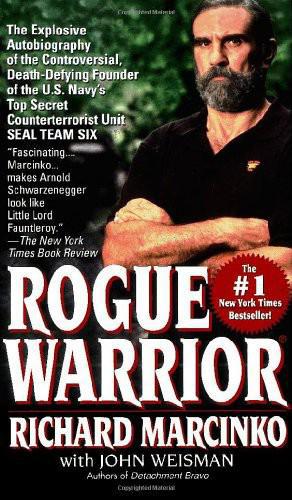
Rogue Warrior PDF
Preview Rogue Warrior
A brilliant virtuoso of violence, Richard Marcinko rose through Navy ranks to create and command one of this country's most elite and classified counterterrorist units, SEAL TEAM SIX. Now this thirty-year veteran recounts the secret missions and Special Warfare madness of his worldwide military career -- and the riveting truth about the top-secret Navy SEALs.
Marcinko was almost inhumanly tough, and proved it on hair-raising missions across Vietnam and a war-torn world: blowing up supply junks, charging through minefields, jumping at 19,000 feet with a chute that wouldn't open, fighting hand-to-hand in a hellhole jungle. For the Pentagon, he organized the Navy's first counterterrorist unit: the legendary SEAL TEAM SIX, which went on classified missions from Central America to the Middle East, the North Sea, Africa and beyond.
Then Marcinko was tapped to create Red Cell, a dirty-dozen team of the military's most accomplished and decorated counterterrorists. Their unbelievable job was to test the defenses of the Navy's most secure facilities and installations. The result was predictable: all hell broke loose.
Here is the hero who saw beyond the blood to ultimate justice -- and the decorated warrior who became such a maverick that the Navy brass wanted his head on a pole, and for a time, got it. Richard Marcinko -- ROGUE WARRIOR.
One of the most controversial veterans of the U.S. Navy's amphibious commando unit, whose troops are known as SEALs, Marcinko describes his combat adventures in Southeast Asia and his counterterrorist activities. A 10-week PW bestseller in cloth. Photos.
Copyright 1993 Reed Business Information, Inc.
An autobiography of a career naval officer who dropped out of high school, enlisted in the U.S. Navy, and spent his ca reer struggling to win acceptance for special warfare SEAL (sea-air-land) units within the Navy establishment from the late 1950s to the present. Marcinko provides detailed descriptions of the early transformation of underwater demolition teams (UDT) into SEAL units. With interesting vignettes about training and actual missions during the Vietnam War, he gives a close-up view of this specialized and little-known brand of warfare. Marcinko's participation in the Iran hostage rescue attempt in 1980 and the U.S. invasion of Grenada in 1983 provide a perspective vastly different from the accepted versions of these events. However, the overuse of salty language throughout the book that lends new meaning to the phrase "curse like a sailor" and Marcinko's polemical accounts of his struggles to win acceptance for specialized warfare within the Navy are unfortunate. Not a necessary purchase. Military Book Club main selection.
- Harold N. Boyer, Marple P.L., Broomall, Pa.
Copyright 1992 Reed Business Information, Inc.
